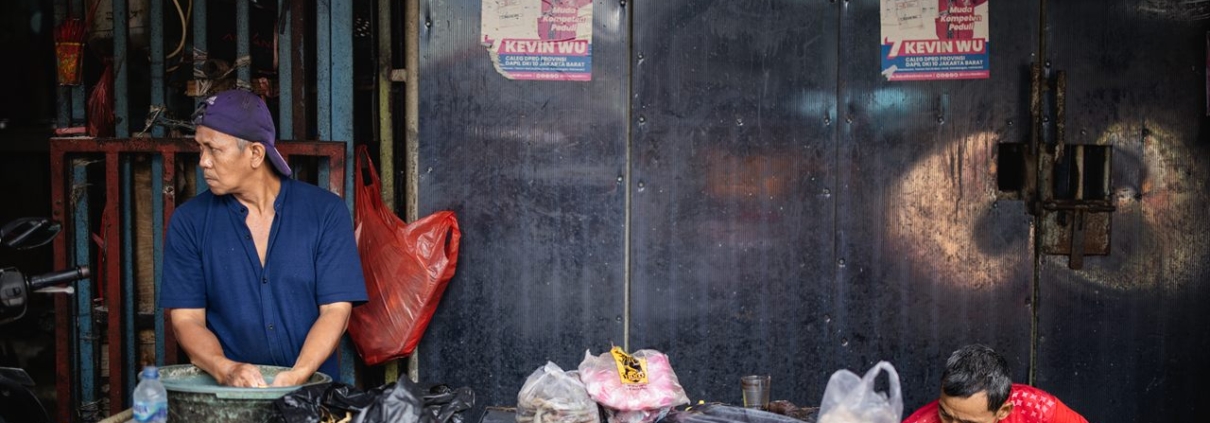Why did garment businesses move from Indonesia to Viet Nam? From social security perspectives
The current market environment in Indonesia presents significant challenges for the garment sector from a social security perspective. Recent discussions with Indonesia stakeholders have revealed growing concerns about Indonesia’s competitive position in the global business landscape, particularly in labour-intensive industries. The garment sector, predominantly employing women, faces increasing operational costs, notably affected by the minimum wage increase implemented in December 2024.
In response to rising business costs, the Indonesian government implemented a temporary countermeasure by reducing Employment Injury Insurance (Jaminan Kecelakaan Kerja, JKK) contribution rates for a six-month period from February to July. While this discount in contribution rates payable to BPJS-TK offers some relief to garment industry employers, it represents merely a partial and short-term solution rather than a comprehensive approach to enhancing Indonesia’s business environment.
Maternity benefits
Vietnam serves as a useful point of comparison, as it has increasingly become a preferred destination for garment industry investors who might otherwise consider Indonesia. From a social protection perspective, Vietnam has developed a considerably more advanced system. A notable example can be observed in a Vietnamese garment factory that I visited, which employed approximately 12,000 female workers. With roughly 2,000 employees becoming pregnant each month, the factory needed to recruit an equivalent number of new workers as replacements.
A critical difference between the two countries lies in their approach to maternity benefits. In Vietnam, employers are not required to directly compensate employees during maternity leave. Instead, the Vietnam Social Security system pays these benefits on behalf of employers. Vietnamese female employees are entitled to up to six months of maternity leave with full salary coverage. This social security programme is funded through a 3% contribution rate paid by employers (including sickness benefits).
By contrast, Indonesian labour law mandates that employers pay full salaries directly to employees on maternity leave using company funds. While this period was previously three months, it has recently been extended. This employer liability scheme represents an additional direct cost for investors compared to Vietnam’s system, where contributions are shared across all employers. In Vietnam, even male-dominated sectors such as construction contribute to the maternity benefit insurance fund, effectively distributing the financial burden of maternity benefits across industries rather than concentrating it in female-dominated sectors like garment manufacturing. Consequently, the cost of maternity leave payments in Vietnam’s garment sector is substantially lower than it would be under an employer liability scheme like Indonesia’s.
Severance pay
Another significant factor affecting business decisions is the cost associated with terminating employment. Indonesia’s severance pay requirements are comparatively higher than many other countries. Vietnam established an unemployment insurance system in 2009 and subsequently eliminated severance pay obligations of employers. Vietnamese employers have been relieved of severance payment responsibilities following the introduction of the unemployment insurance scheme. In fact, cash flow is more predictably for the payment of monthly contribution than severance pay.
Indonesia, however, maintained its severance pay requirements even after implementing an unemployment insurance scheme (Jaminan Kehilangan Pekerjaan, JKP) in 2022. While the formula was revised to reduce severance amounts somewhat, the employer’s obligation to provide severance payments remains in place alongside the new unemployment insurance system. This dual requirement results in substantially higher termination costs in Indonesia compared to Vietnam.
While minimum wage levels between the two countries may be relatively comparable, the combined impact of hiring costs (including potential maternity benefit payments) and firing costs (related to severance pay) creates a significant competitive disadvantage for Indonesia. Vietnam’s social security system effectively covers these contingencies while removing direct employer liabilities, resulting in lower overall employment-related costs.
JKP and JHT
Indonesia’s Job Creation Law (Cipta Kerja) of 2023, Law Number 6, introduced changes to employment relationships, particularly regarding fixed-term contracts (Perjanjian Kerja Waktu Tertentu, PKWT). Previously, employers were required to observe waiting periods before renewing contracts, a preventive measure designed to discourage indefinite contract renewals. The reforms have relaxed these restrictions, allowing employers to renew fixed-term contracts without limitation. Consequently, workers may now face very short contract terms and termination through contract expiration rather than formal dismissal when businesses need to reduce their workforce.
A critical gap exists between this labour law provision and the unemployment insurance regulations. While fixed-term contract workers are members of the unemployment insurance programme (JKP), they typically do not qualify for benefits when unemployed due to contract expiration, which represents the most common reason for job loss among these workers. This discontinuity between labour law and social protection mechanisms creates significant vulnerabilities.
When fixed-term workers lose their jobs, many resort to accessing their retirement funds through the Old Age Security Programme (Jaminan Hari Tua, JHT) to cope with immediate income loss. This practice effectively sacrifices future income security to address present unemployment challenges, creating an unsustainable long-term situation for both workers and the broader social security system.
From multiple perspectives—labour regulations, employment practices, and social security frameworks—Indonesia faces interconnected challenges. Many current policy measures appear short-sighted, potentially compromising the country’s long-term economic and social development objectives. This present moment offers a critical opportunity for Indonesian stakeholders to collaboratively address these issues. Beyond mere discussion, immediate action is needed to enhance the long-term sustainability of productive employment and decent work conditions in Indonesia, ensuring both economic competitiveness and adequate social protection for workers.
Note: This article was generated using artificial intelligence technology with human assistance, based on a transcript of my original presentation.





